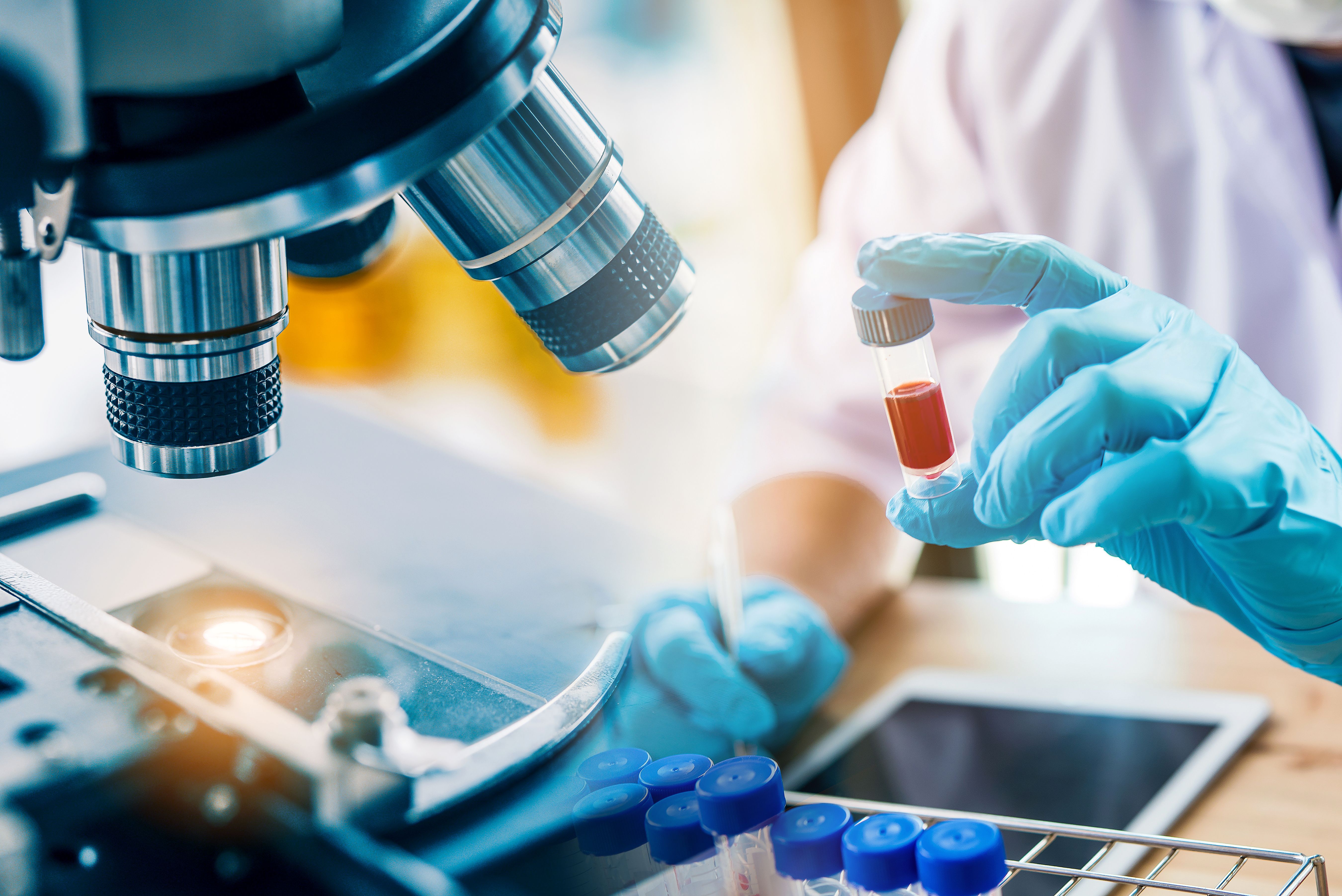Pittcon 2024: Detecting Nitrosamines Using Gas Chromatography–Electron Capture Detection
On February 25, at Pittcon in San Diego, California, He Nan, senior scientist at AbbVie, held a lecture on N-nitrosamines. Han gave an overview of the risks associated with N-nitrosamines in pharmaceutical compounds, as well as how to monitor them via gas chromatography–electron capture detection (1).
lab technician assistant analyzing a blood sample in test tube at laboratory with microscope. Medical, pharmaceutical and scientific research and development concept. | Image Credit: © totojang1977 - stock.adobe.com

Though LC–MS has been used for detecting numerous N-nitrosamines, this method does not work best with compounds with poor ionization efficiency. As such, Nan and his team did a case study on how halogenated N-nitrosamine can be detected with ultrasensitive gas chromatography-electron capture detection. According to the team, this method achieved a limit of detection (LOD) of 20 parts per billion (ppb), all while no detectable levels of N-nitrosamine could be found in pharmaceutical compounds with complex sample matrices.
Nitrosamines are carcinogens that can be found in products like processed meats, alcohol, and cosmetics. These substances have been known to potentially cause cancer in the lungs, brain, kidneys, and stomach (2). The presence of N-nitrosamines in different marketed products has led to multiple recalls, with N-nitrosamines being listed in International Council for Harmonisation of Technical Requirements for Pharmaceuticals for Human Use (ICH) M7 guidelines as cohort of concern compounds (3).
This has led to worldwide regulatory expectations for pharmaceutical products to limit their presence within products. Specifically, an EMA procedure has utilized an 18 ng/day limit if no allowable daily intake is established for N-nitrosamine unless higher limits can be justified based on ICH M7 guidelines. With such stringent limitations, highly sensitive and robust analytical methods are needed to fulfill these requirements. However, this process can prove difficult due to existing methods involving low sensitivity and the list of controlled compounds continuously growing (4).
References
(1) Nan, H. Investigation of Potential Risk of N-Nitrosamines in Pharmaceutical Compounds with Complex Sample Matrix by Ultrasensitive Gas Chromatography–Electron Capture Detection. Pittcon and The Pittsburgh Conference on Analytical Chemistry and Applied Spectroscopy, Inc. 2024. https://labscievents.pittcon.org/event/pittcon-2024/planning/UGxhbm5pbmdfMTY2NzgzOQ== (accessed 2024-2-21)
(2) Robles, H. Nitrosamines. ScienceDirect 2014. https://www.sciencedirect.com/topics/earth-and-planetary-sciences/nitrosamine (accessed 2024-2-21)
(3) Assessment and Control of DNA Reactive (Mutagenic) Impurities in Pharmaceuticals to Limit Potential Carcinogenic Risk. International Council for Harmonisation of Technical Requirements for Pharmaceuticals for Human Use 2017. https://database.ich.org/sites/default/files/M7_R1_Guideline.pdf (accessed 2024-2-21)
(4) Khorolskiy, M.; Ramenskaya, G.; Vlasov, A.; Perederyaev, O.; Maslennikova, N. Development and Validation of four Nitrosamine Impurities Determination Method in Medicines of Valsartan, Losartan, and Irbesartan with HPLC-MS/MS (APCI). Iran. J. Pharm. Res. 2021, 20 (3), 541–442. DOI: 10.22037/ijpr.2021.115102.15195
TD-GC–MS and IDMS Sample Prep for CRM to Quantify Decabromodiphenyl Ether in Polystyrene Matrix
April 26th 2024At issue in this study was the certified value of decabromodiphenyl ether (BDE 209) in a polystyrene matrix CRM relative to its regulated value in the EU Restriction of Hazardous Substances Directive.
LC–MS/MS-Based System Used to Profile Ceramide Reactions to Diseases
April 26th 2024Scientists from the University of Córdoba in Córdoba, Spain recently used liquid chromatography–tandem mass spectrometry (LC–MS/MS) to comprehensively profile human ceramides to determine their reactions to diseases.
Inside the Laboratory: The Chromatography Laboratory at the University of Rouen
April 18th 2024In this edition of “Inside the Laboratory,” Pascal Cardinael and Valérie Agasse of the University of Rouen in Mont‑Saint-Aignan, France, discuss their laboratory’s work with miniaturizing gas chromatography (GC) columns and systems to improve on-site air analysis of volatile organic compounds (VOCs).